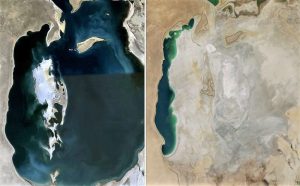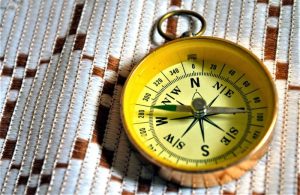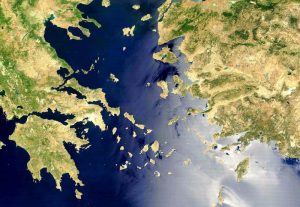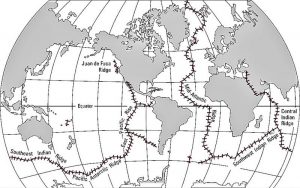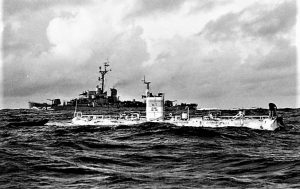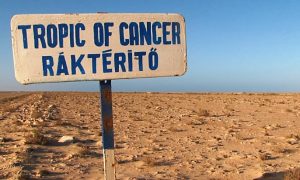Aral Sea
The shallow Aral Sea was once the fourth largest body of continental water in the world. The Aral Sea and its disappearance are two of the most interesting aspects for geographers, and concern scientists more and more due to the remarkable reduction of its area and volume that began in the second half of the 20th century, when the region was still part of the Soviet Union, and that has continued until the 21st century. This change was mainly due to the irrigation diversion of the rivers Syr Darya in the north and AmuDarya in the south, which flowed into the Aral Sea and which served as its main sources of water entry. Although it is considered a sea, it is actually an inland lake and is not linked to a sea or an ocean.
What is the Aral Sea?
The Aral Sea is actually a lake that is not linked to any ocean. As it is considered an ocean, it can be said that it was once the fourth largest body of water on earth. Day by day it dries up even more causing great damage to the land, flora and fauna of the place.
Location
The Aral Sea is located in Central Asia, between Kazakhstan in the north and Uzbekistan in the south.
History of the Aral Sea
In 1960, the Soviet Union launched a plan to turn the arid plains of Central Asia into the most important cotton-producing area. Structures were created that diverted water from rivers to irrigate crops. The cotton industry flourished at a high price as seawater began to disappear.
Characteristics
- It is located northwest of Kyzyl Kum desert, between the current Uzbekistan and Kazakhstan.
- It is not possible to calculate the amount of water located in it because its levels are constantly changing every year.
- The salinity of the sea increased considerably; it is worth mentioning that the salinity of the oceans is 33-37 grams per liter, that of the Aral exceeds 110 grams per liter.
- Low precipitation rate and high evaporation lead to constant water evaporation.
Economy
It is known that the main basis of Aral Sea region economy is fishing, and the companies associated with it. As Uzbekistan is the most agricultural country in the area, its economy presents serious complications. In order to avoid a major catastrophe and at the same time improve the current situation in this area, the Government of the Republic of Uzbekistan has developed a series of measures: in particular, it has developed schemes for efficient use of water, changing the situation of cotton, planting fewer varieties of plants that consume water, reviewing the use of fertilizers in agriculture, and so on. The Aral Sea drought became an international disaster. The World Bank and UNESCO have intervened in the problem in order to protect the Aral Sea. Some experts claim that the sea has a large amount of oil and gas to exploit so they are looking for a deposit of them.
Aral Sea ecological problems
The situation that faces the Aral Sea is one of the greatest ecological disasters in history. Every day that passes, it dries even more, becomes more saline giving rise to salty deserts, which have come to cover thousands of miles causing climate change throughout the region. The pressure exerted by sea waters regulating the wind force practically disappeared, so the protection provided by them also finished. For this reason, the area is now cradle of wind storms that have caused massive erosion. Strong winds at the same time, provoked soil salinization because the sea dried parts were full of salt, and the wind moved that salt throughout the region. This land salinization caused native vegetation disappeared and grasses were affected, as a result, land animal species decreased considerably, so much that there are practically no animals in the place.
Future
The current sea crisis is a responsibility of human action. Over the years, the volume of seawater shrank at a rapid rate, and the seabed began to appear, turning islands into peninsulas or continuous parts of the earth. Salinity and pollution have increased considerably, and fish began to die because they could not withstand the new water conditions. Fishing and maritime industries declined, and many people who depended on the sea had many problems to survive. It is considered that this region will be even more affected soon and that it will damage people’ health in the vicinity, as Vozrozhedenya Island was used as a biological weapons test site during the Cold War and large quantities of anthrax spores have been found.
Petroleum and gas
According to some experts, the Aral Sea hides large sources of oil and gas beneath its waters. Approximately one billion cubic meters of natural gas and more than thirty oil fields is what experts believe is hidden in it. For this reason, it is expected that in the future the place will be one of the main economic sources of the world.
How to cite this article?
Briceño V., Gabriela. (2019). Aral Sea. Recovered on 24 February, 2024, de Euston96: https://www.euston96.com/en/aral-sea/
